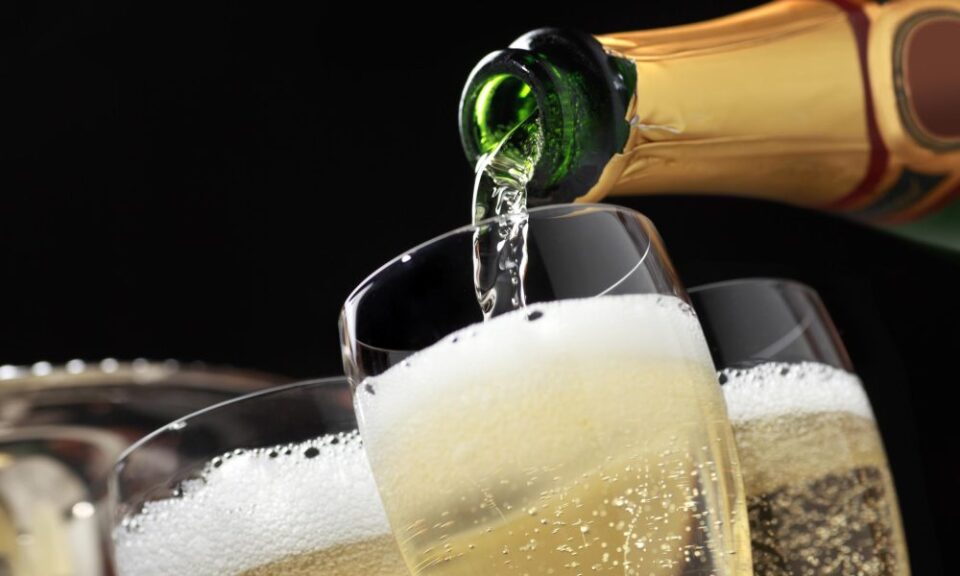Some of the most famous and classy drinks in the world are champagne. Due to its sparkling and classy nature, champagne has been associated with important events, accomplishments, and wealth for hundreds of years. Knowing the basics about champagne can help you enjoy it more, whether you’re picking out a bottle for a party, buying it as a gift, or just interested in the different kinds.
This article will discuss the basics of champagne, such as the different kinds, how much alcohol is in champagne, and why Brut Champagne is so popular with wine lovers.
What is Different About Champagne?
Only the French region of Champagne produces Champagne, a sparkling wine. We make it with great care using the Traditional Method (Méthode Champenoise), which includes a secondary fermentation process in the bottle. The tiny bubbles that make bubbly so special are made in this way.
Champagne is distinct from other sparkling wines because it must follow strict rules about grape types, vineyard management, and aging time. The main types of grapes used to make champagne are Chardonnay, Pinot Noir, and Pinot Meunier.
- Chardonnay: It makes the wine taste fresh and classy.
- Pinot Noir: Gives depth and body
- Pinot Meunier: It adds fruitiness and balance.
Understanding Champagne Alcohol Content
A question that champagne lovers often ask is, “How much alcohol is in champagne?” It is common for champagne to have an alcohol level of between 12% and 12.5% ABV. In this way, champagne is similar to many white and red wines, but it’s not as strong as vodka or whiskey.
The amount of alcohol can change a little depending on things like how ripe the grapes are and how long it takes to brew. Even though champagne has a low alcohol content, the bubbles in it can help the alcohol get into your system faster, making it feel stronger than a still wine with the same ABV. Champagne is often believed to induce intoxication more quickly than other alcohol-based beverages.
Types of Champagne: A Look at Brut Champagne and More
Champagne is grouped by how sweet it is, which is decided by how much residual sugar is added at the end of the production process. Here are some of the most popular types:
- Brut Champagne: The most famous type and has very little sugar (usually less than 12 grams per liter). It tastes crisp and dry, which makes it ideal for many situations.
- Extra Brut: Even drier than Brut and has almost no sugar left over. People who like a sharp, crisp finish will like this bottle the most.
- Demi-Sec: This type of champagne is sweeter and goes well with sweets.
- Doux: This is the sweetest type of wine and is often served as a dessert wine.
Due to its good acidity balance and versatility, Brut Champagne remains a popular choice. It goes well with many things, like seafood, chicken, and cheese, which makes it a wonderful choice for parties and get-togethers.
Champagne as a Gift: A Timeless Gesture
When it comes to gifts, champagne is one of the most classy and well-liked options. A bottle of champagne is a sign of joy and thanks, whether it’s for a birthday, wedding, anniversary, or business event.
When choosing champagne as a gift, think about what the person will like. Brut Champagne is a safe and classy choice if they like dry drinks. Demi-Sec or Rosé Champagne might be better for people who like something a little sweeter.
A caring touch is to pair the bottle with stylish items like champagne flutes or a handwritten note. A nicely put-together champagne gift box makes the whole thing more enjoyable and makes the gift even more meaningful.
Tips on How to Drink and Enjoy Champagne
If you serve and drink champagne the right way, you’ll get the most out of it. Here are some important things to think about:
- Serving Temperature: Serve champagne cool, but not icy cold. It should be between 7 and 10°C (ca. 50 °F to 50°F). Too much chilling can dull the tastes, and too much warmth can make too much foam.
- Choose the Right Glass: Traditional coupe glasses look nice, but flutes or tulip-shaped glasses keep the bubbles and flavors inside longer.
- Opening the Bottle: Hold the bottle at a 45-degree angle and slowly twist the cork while putting light pressure on it. This action keeps the gas and stops the fizz from getting too high.
You can make sure you enjoy every sip of champagne to the fullest by following these steps.
Pairing Champagne with Food
One great thing about champagne is that it goes well with many different foods. It goes well with many different foods because the crisp acidity and fizz clean the mouth.
- Sparkling wine called Brut goes well with seafood, sushi, and soft cheeses.
- Rosé Champagne brings out the tastes of grilled meats and desserts with berries.
- Champagne with a demi-sec is a perfect match for sweets made with fruit.
Knowing how to pair these foods can help make both everyday meals and special occasions more enjoyable.
Last Thoughts
Champagne is more than just a drink; it stands for happiness, success, and excellent taste. If you know about the history of champagne, how to choose a Brut Champagne, or how to think about giving champagne as a gift, you’ll enjoy it even more.
Champagne is still a popular choice for celebrations, gifts, and times of indulgence because it has a low alcohol content, fresh flavors, and a beautiful presentation. You can make any event more special and create memories that will last a lifetime by picking the right type and serving it the right way.

